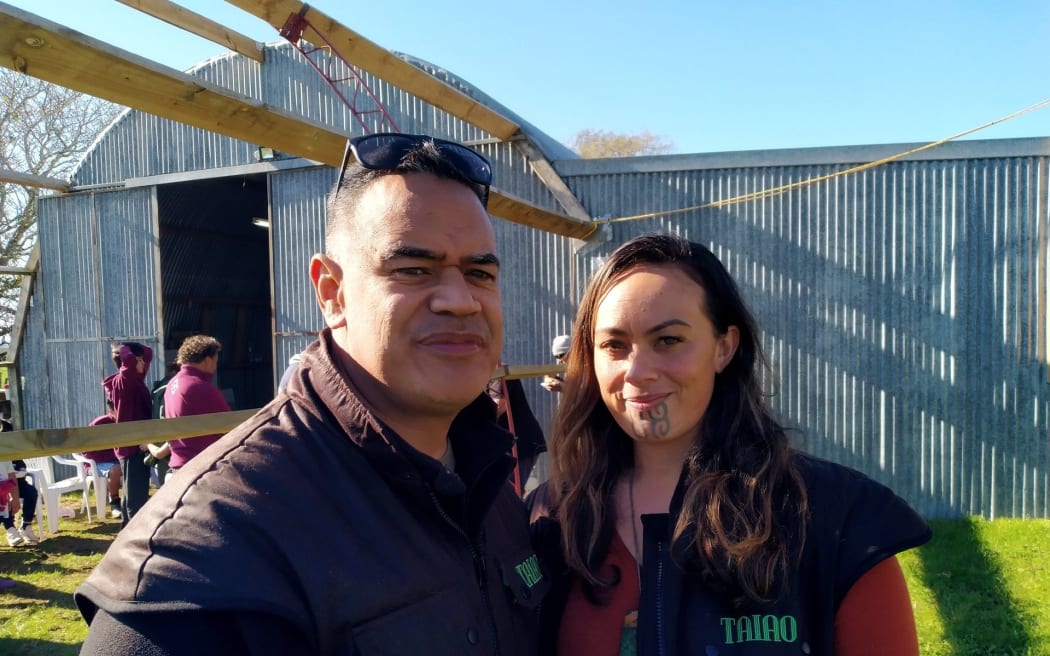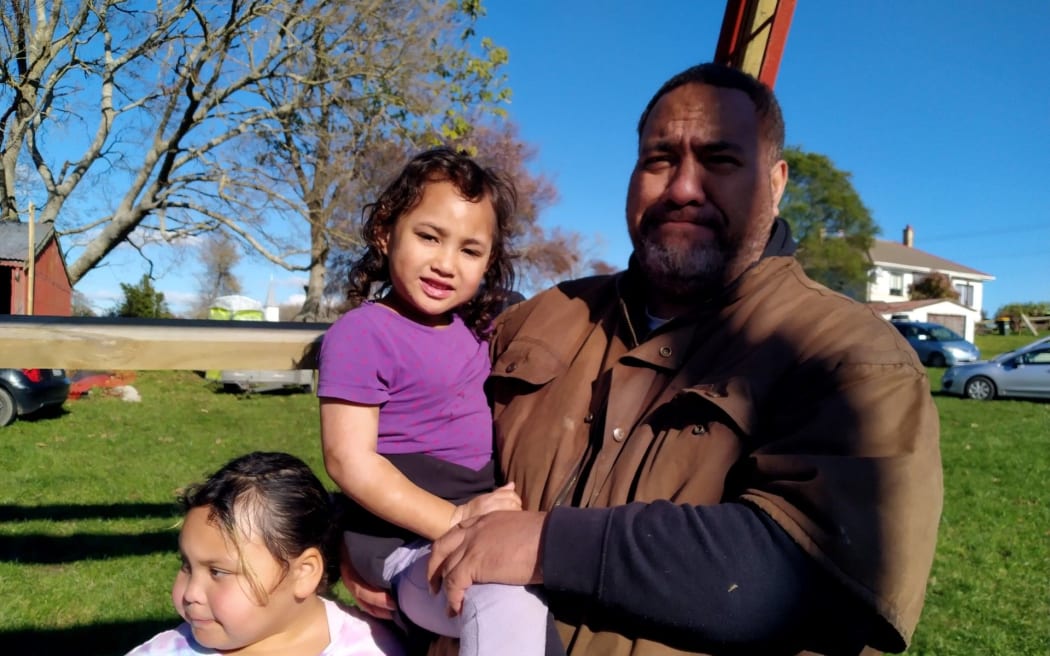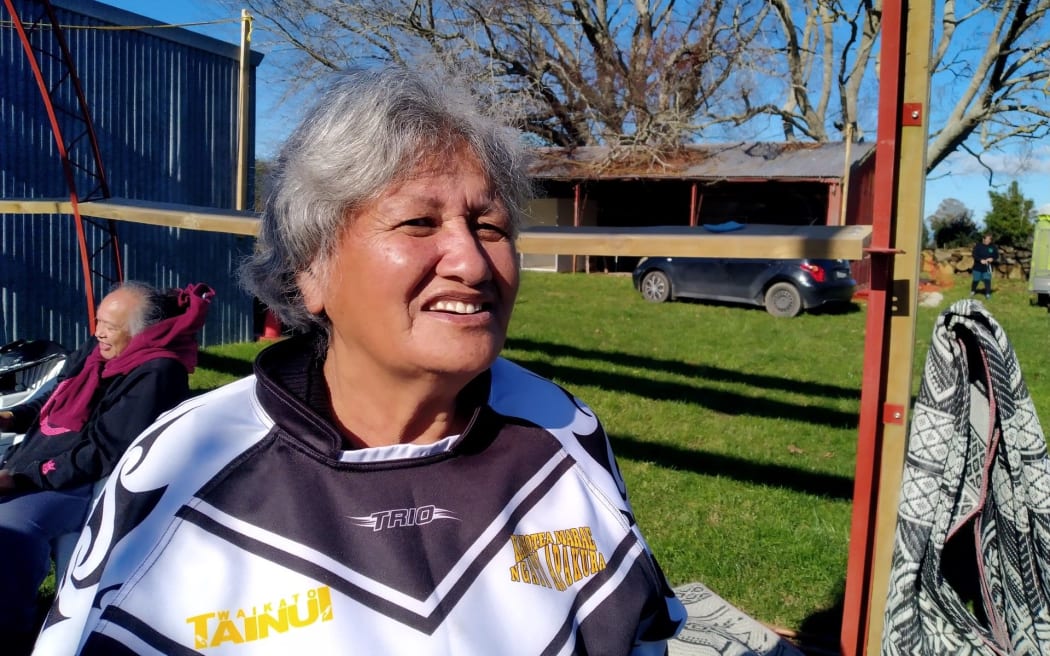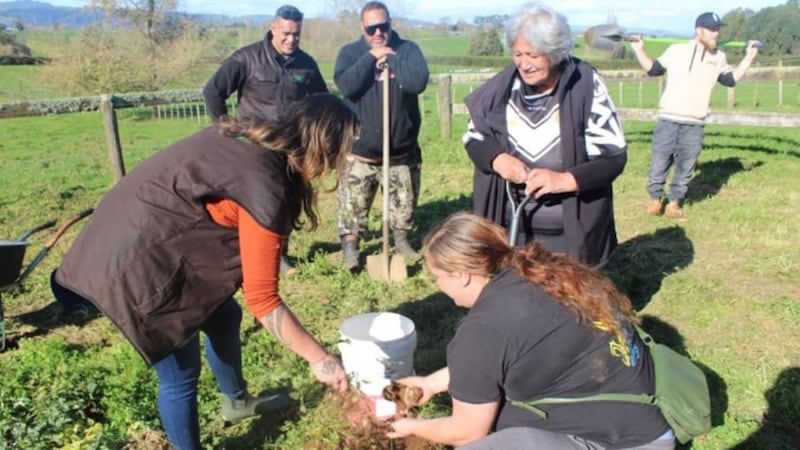Ngāti Apakura is harvesting kūmara from its traditional whenua for the first time in 160 years. Photo / Supplied / Ngāti Apakura Runanga Trust
Last year, the Anglican Church bought four hectares at Rangiaowhia outside of Te Awamutu, with the intention of enabling its return to Ngāti Apakura. The hapū is now leasing the land from the church, allowing it to harvest crops on its traditional whenua for the first time in 160 years.
Ngāti Apakura lost the land in the violent attack at Rangiaowhia in 1864, and it is hoped the harvest will be a step towards restoration of the whenua and hapū.
Over 323 hectares were once farmed by Ngāti Apakura and used for growing fruit trees, wheat, and producing wheat for flour. The hapū had trade routes throughout Waikato and into Manukau, with three sailing ships taking goods to colonies in Australia and even to the California goldfields.
Te Rūnanga o Ngāti Apakura chairman Bill Harris said the first flour produced by the hapū in the 1800s was sent even further afield.
"[It] went off to Queen Victoria in England. She responded in kind by sending back to Ngāti Apakura a portrait of the royal family."
Harris said he believed that portrait was now at Te Papa.
However, in 1864 the hapū was violently attacked, the land confiscated, people shot and even burnt alive. The hapū was scattered and the attack at Rangiaowhia is something the hapū is still dealing with.
Nearly 160 years later, this first harvest is for kūmara. Hapū members shared stories of Whakaotirangi, an ancestor of the Waikato iwi Tainui, who first brought kūmara and other plants to Aotearoa.

John and Lorinda Pereira help hapū reconnect with indigenous and sustainable growing methods. Photo / RNZ / Libby Kirkby-McLeod
Helping bring kūmara back to Rangiaowhia is another woman, Lorinda Pereira, and her husband John who help hapū reconnect with traditional, indigenous, and sustainable growing methods.
"Our whānau are very passionate about restoring ancestral knowledge around sustainable living... for Māori to know, and to practically work out how to thrive from their whenua," Pereira said.
Harvest day was always an exciting time, but especially this one, she said.
"These people have been waiting 160 years."
After harvest is the time to look forward to celebrating, resting, and welcoming in the new year of Matariki.

Orrin Kapua with his daughters. Photo / RNZ / Libby Kirby-McLeod
Orrin Kapua from Te Rūnanga o Ngāti Apakura said the scars from the attack at Rangiaowhia still linger. The harvest day is just one initiative for the hapū to come back and reunite as Ngāti Apakura.
"People were scattered all over the place. It's just wonderful to be part of that process where people are coming together again and finding their roots," Kapua said.
One harvester said the event was helping him reconnect with his hapū, after his family left the area as a result of the 1864 attack.
"My cousin brought me out here just to be a part of the harvest. I'm trying to reconnect back home and so that's brought me back to today," he said.

Hazel Coromandel-Wander said the kūmara harvest is the first step towards fulfilling the hapū's vision. Photo / RNZ / Libby Kirkby-McLeod
Hazel Coromandel-Wander said the first harvest was just the beginning of the hapū's vision. She hoped they would be sending flour to royalty again one day.
"We are going to send it to our king first. And then after that to King Charles."
Coromandel-Wander said that was the way it was done years ago by their tūpuna and it was part of their tikanga today.
Wheat is still to come but this first kūmara harvest is a joyful step towards that vision.

